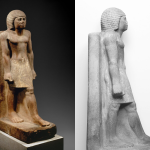The gilded coffin of Nedjemankh
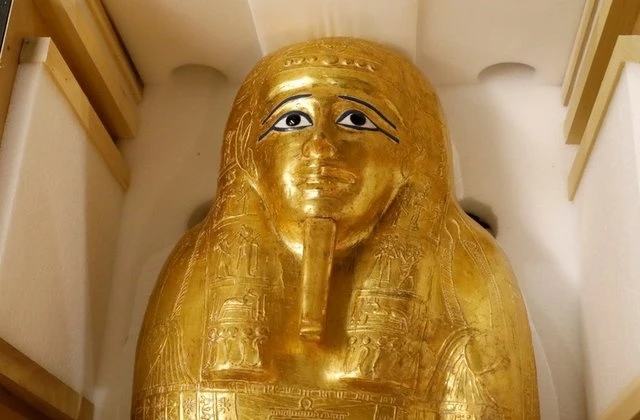
This is a detail from the gilded coffin of Nedjemankh, an Egyptian priest from the Ptolemaic Period, dated to around 150–50 BCE.
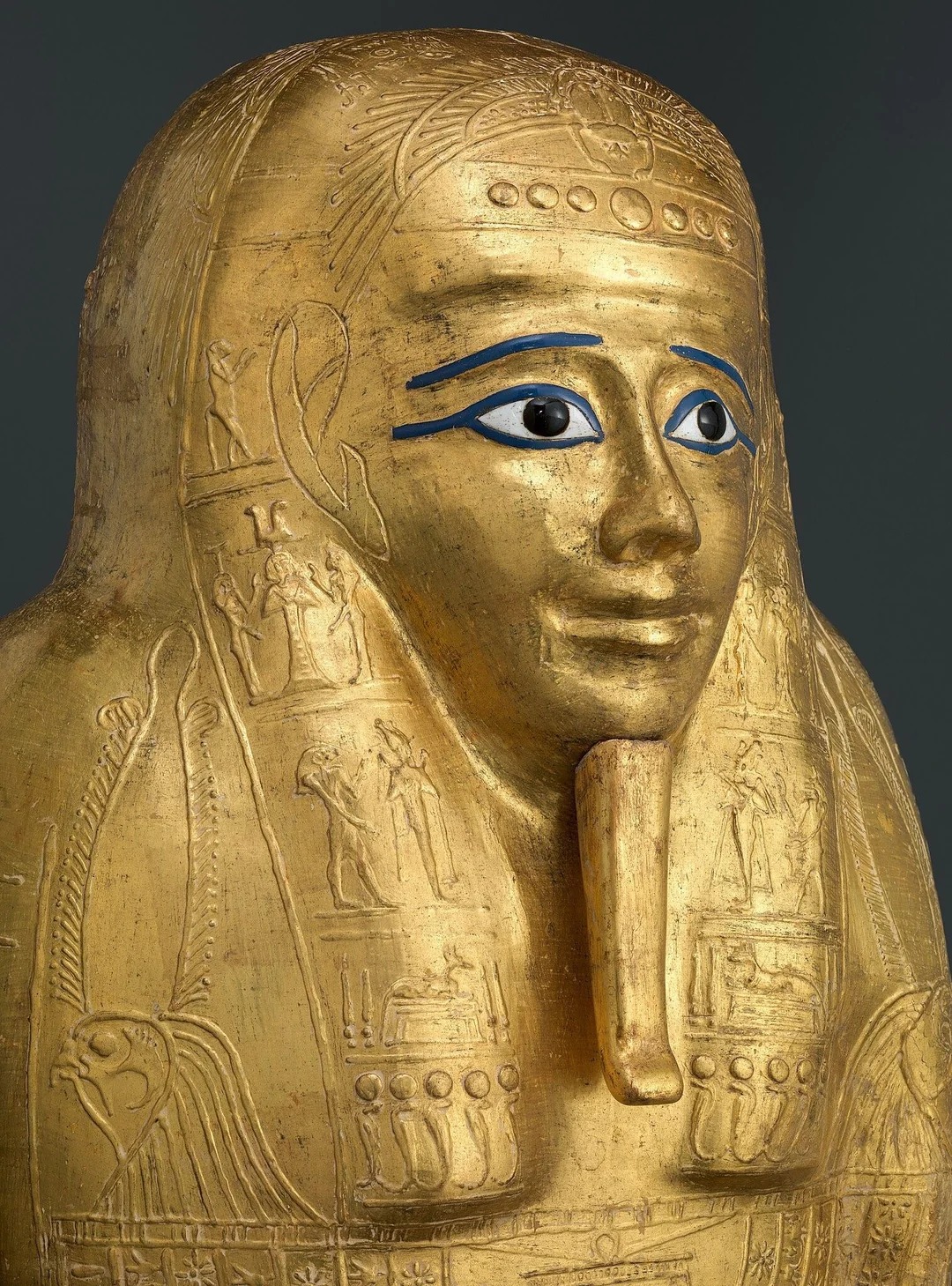
The mummiform coffin was crafted for Nedjemankh, a prominent priest of the ram-headed god Heryshef from Herakleopolis. Its surface, richly adorned with elaborate reliefs of scenes and inscriptions in thick layers of gesso, was meant to protect and guide him on his passage from death into eternal existence as a transfigured spirit. The exterior is covered in gold, a material closely associated in ancient Egypt with divinity and the eternal nature of the gods, as well as with the deified dead. Ancient texts suggest that the use of gold in coffins was believed to aid the deceased in achieving rebirth in the afterlife.
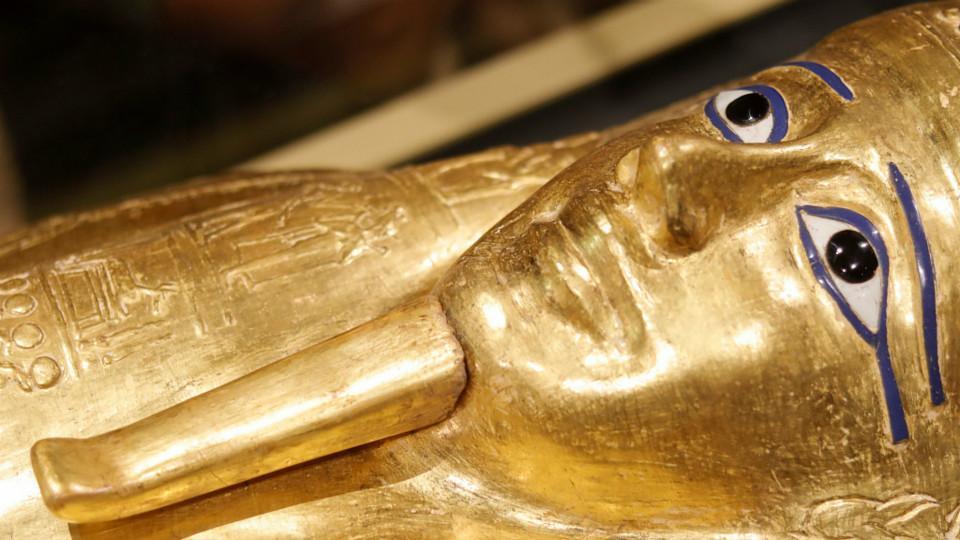
What makes this coffin exceptional is the use of delicate sheets of silver foil lining the inside of the lid, placed to safeguard Nedjemankh’s face. To the Egyptians, gold and silver were not merely precious metals but powerful symbols. They could represent the flesh and bones of the gods, the sun and the moon, or, more specifically, the very eyes of the cosmic deity Heryshef, whom Nedjemankh faithfully served.
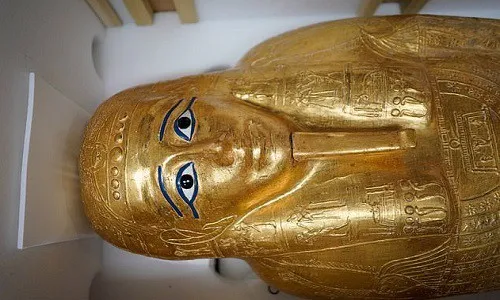
Even more extraordinary is the long inscription on the coffin’s lid, which directly links gold and electrum (“fine gold”) to the divine body, the brilliance of the sun, and the resurrection of the deceased. This rare connection between text and material—the symbolic language of the inscription reflected in the actual metals used—makes the coffin an almost unparalleled example of ancient Egyptian religious and funerary art.






